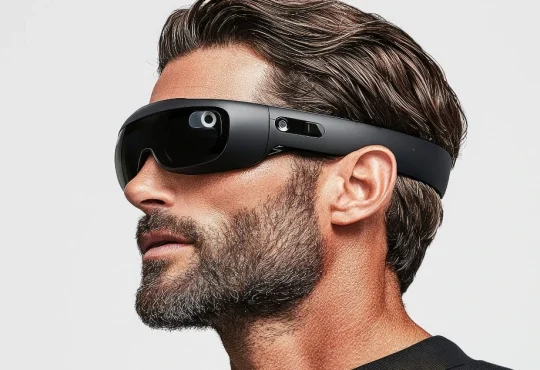Gadgets have become crucial in our modern lives’ communication, entertainment, and productivity. From smartphones to computers to smart home devices, these tools are deeply integrated into our daily routines, making it hard to imagine life without them. However, what precisely defines the purpose of gadgets? This article delves into how we utilize these devices and why they are significant.
Best Guide to Gadgets: The Basic 3-in-1 Topics Explained!
What are Gadgets?
Gadgets are small, versatile devices integral to everyday life for decades, often popularized by films and television shows. They offer entertainment, practicality, and convenience, making them essential in modern life. Whether it’s playing music or controlling your home’s temperature, gadgets serve many functions that enhance our daily routines and improve the quality of our lives.
The range of gadgets available today is vast and varied. Simple items like music players, remote controls, and digital watches serve essential yet important roles in our daily lives. On the more complex end, smartphones and tablets have revolutionized how we communicate, work, and entertain ourselves. These sophisticated devices combine multiple functions into one compact unit, allowing users to make calls, browse the internet, play games, and access a wide range of apps designed to make life easier and more enjoyable. Additionally, some gadgets can remotely control home lights or appliances and even measure environmental factors such as humidity levels, showcasing the broad scope of their applications.
Moreover, portability is a crucial feature of many modern gadgets. Designed to be lightweight and compact, these devices can be taken almost anywhere, ensuring their utility whether you’re at home, at work, or on the go. This portability means that essential functions and conveniences are always within reach, making gadgets indispensable in our fast-paced, technology-driven world. As technology advances, the capabilities and applications of gadgets will only expand, further embedding them into the fabric of our everyday lives.
History of Gadgets
Gadgets have been integral to human ingenuity for centuries, evolving dramatically in their forms and functions over time. From the early days of mechanical inventions to the sophisticated digital devices we rely on today, gadgets have continuously transformed our daily lives, making tasks more accessible, providing entertainment, and enhancing connectivity. By tracing the history of gadgets, we can better appreciate the strides technology has made and its profound impact on modern living.
These early devices laid the foundation for more complex machines that followed. As technology advanced, the development of gadgets like calculators, typewriters, and cameras revolutionized various aspects of daily life. Calculators made complex arithmetic more accessible, typewriters improved the efficiency of written communication, and cameras allowed people to capture and preserve memories like never before.
The mid-20th century marked a significant leap in gadget innovation with the invention of the transistor in the 1950s. This small, low-power component revolutionized electronics, leading to the creation of portable devices such as radios. Radios’ portability allowed people to enjoy music and news anywhere, fostering a culture of connectivity and entertainment on the go. This era set the stage for the rapid advancement of gadgets, paving the way for the diverse and multifunctional digital devices we use today.
Benefits of Gadgets:
Gadgets have evolved into indispensable tools that enhance our lives, offering convenience, efficiency, and connectivity. One of their primary benefits lies in their ability to save time and streamline daily tasks. From smartphones managing schedules and emails to smart home devices automating household chores, gadgets simplify our routines, enabling us to accomplish more in less time. Their intuitive interfaces and advanced functionalities optimize productivity, empowering us to navigate our busy lives easily.
Moreover, gadgets foster seamless communication and connectivity, bridging distances and facilitating interactions. With smartphones, tablets, and laptops, staying in touch with loved ones and colleagues has become effortless, regardless of geographical barriers. These devices offer diverse communication channels, from text messages to video calls, nurturing relationships and fostering collaboration. In professional settings, gadgets facilitate remote work and virtual meetings, enabling teams to collaborate effectively and stay connected in today’s digital age.
Furthermore, gadgets play a pivotal role in lifelong learning and personal development. With access to a wealth of educational resources and learning platforms, individuals can pursue self-directed learning and acquire new skills at their own pace. Educational apps, e-books, and online courses accessible on smartphones and tablets empower users to expand their knowledge and expertise, fostering continuous growth and skill enhancement. Gadgets offer tools to improve cognitive functions and mental well-being, such as meditation apps and sleep trackers, promoting mindfulness and stress relief for overall wellness.
In addition to their functional benefits, gadgets contribute to emotional well-being by providing entertainment and recreation options. Streaming services, gaming consoles, and virtual reality experiences offer relaxation, recreation, and socialization opportunities, enhancing mood and emotional resilience. By integrating entertainment features with productivity tools, gadgets strike a balance between work and leisure, enriching our lives and promoting holistic well-being.
Uses in Everyday Life:
Gadgets are becoming increasingly commonplace in homes worldwide, adding convenience and comfort to many activities. But what is their purpose? Gadgets are tools designed to help us complete tasks more quickly, enhance our daily lives, and make it possible to do things that would otherwise be difficult or impossible.
These devices streamline our daily routines and provide innovative solutions to everyday problems, making life more efficient and enjoyable. Gadgets are not just luxuries; they have become essential tools that improve our quality of life.
Gadgets have endless uses in everyday life. They help us stay organized with calendars and reminders, automate household tasks with smart home devices, and enhance entertainment with streaming services and high-quality audio systems. From connected electrical outlets and smart lights to fitness trackers and voice-activated assistants, there’s a gadget for almost every need, making our homes smarter and our lives easier.
Impact on Education
Gadgets are revolutionizing how people learn, and their impact on education cannot be overstated. Technology has become an integral part of the classroom, providing students with unprecedented access to information and resources. This shift has profound implications for students, teachers, and educational institutions, fundamentally transforming the learning landscape.
For students, the advent of technology in education means having virtually unlimited resources at their fingertips. From digital textbooks to online tools and educational apps, students can now explore and learn in previously unimaginable ways. This abundance of resources enhances their learning experience and fosters greater engagement and curiosity, encouraging them to take a more active role in their education.
Teachers, too, have greatly benefited from integrating gadgets into the classroom. Technology allows educators to customize their lessons more effectively, incorporating multimedia elements such as videos, interactive activities, and digital simulations to make learning more dynamic and engaging. This flexibility enables teachers to cater to different learning styles and paces, ensuring that all students have the opportunity to succeed. Moreover, technology facilitates real-time feedback and assessment, helping teachers identify and address learning gaps more efficiently.
Educational institutions have also embraced digital tools to enhance their offerings and provide students with unique learning experiences. For instance, virtual reality programs can simulate real-world environments, giving students hands-on experiences without leaving the classroom. This enriches the curriculum and prepares students for careers by providing practical skills and knowledge. Additionally, institutions are leveraging technology to streamline administrative tasks, improve communication, and support remote learning, making education more accessible and efficient.
Impact on Socialization
Gadgets have transformed our social lives by providing entertainment, convenience, and new ways of connecting. However, their impact on socialization is complex, with both positive and negative aspects. As gadgets evolve, it is crucial to understand their effects on our ability to communicate, interact, and build relationships.
On the positive side, gadgets have made it incredibly easy to stay connected with people over long distances. Video calls, social media platforms, and messaging apps allow us to engage in conversations and share experiences without being physically present. This capability is precious for maintaining relationships with family and friends who live far away, making the world feel smaller and more connected.
Moreover, gadgets can help reduce feelings of isolation by providing access to online communities and forums where individuals can discuss various topics, share interests, and find support. These digital spaces can be particularly beneficial for those who may not feel comfortable sharing certain aspects of their lives face-to-face. As a result, gadgets have enabled people from diverse backgrounds to socialize and form meaningful connections, fostering a sense of belonging and community.
However, the pervasive use of gadgets also has its drawbacks. Excessive reliance on digital communication can lead to a decline in face-to-face interactions, which is essential for developing deep, personal relationships. Furthermore, the superficial nature of some online interactions can create a sense of loneliness and detachment. It is necessary to balance leveraging the benefits of gadgets for socialization while maintaining the richness and authenticity of in-person connections.
Conclusion:
The purpose of gadgets has long been debated, especially in our rapidly advancing technological world. Modern gadgets aim to make everyday tasks more accessible and efficient, enabling quick communication, easy access to information, secure file storage, and photo and video capture. They also provide entertainment through games, music, and movies. Ultimately, gadgets are designed to simplify daily life by offering solutions to challenges that would be difficult or impossible to overcome without them.





